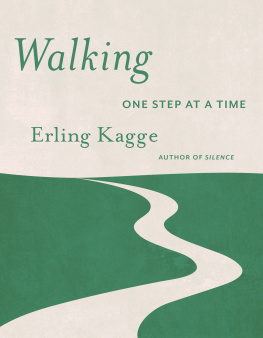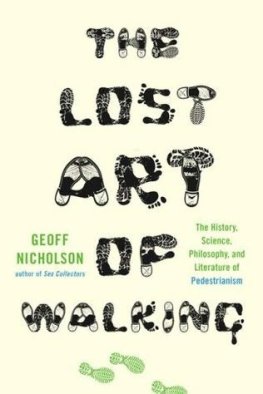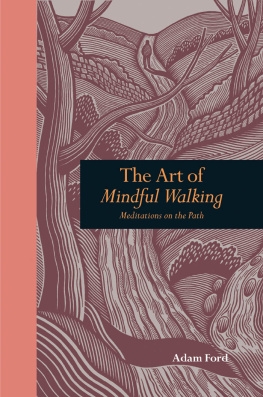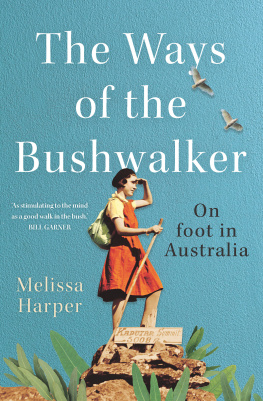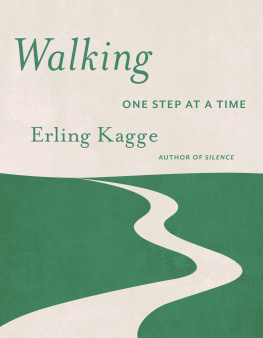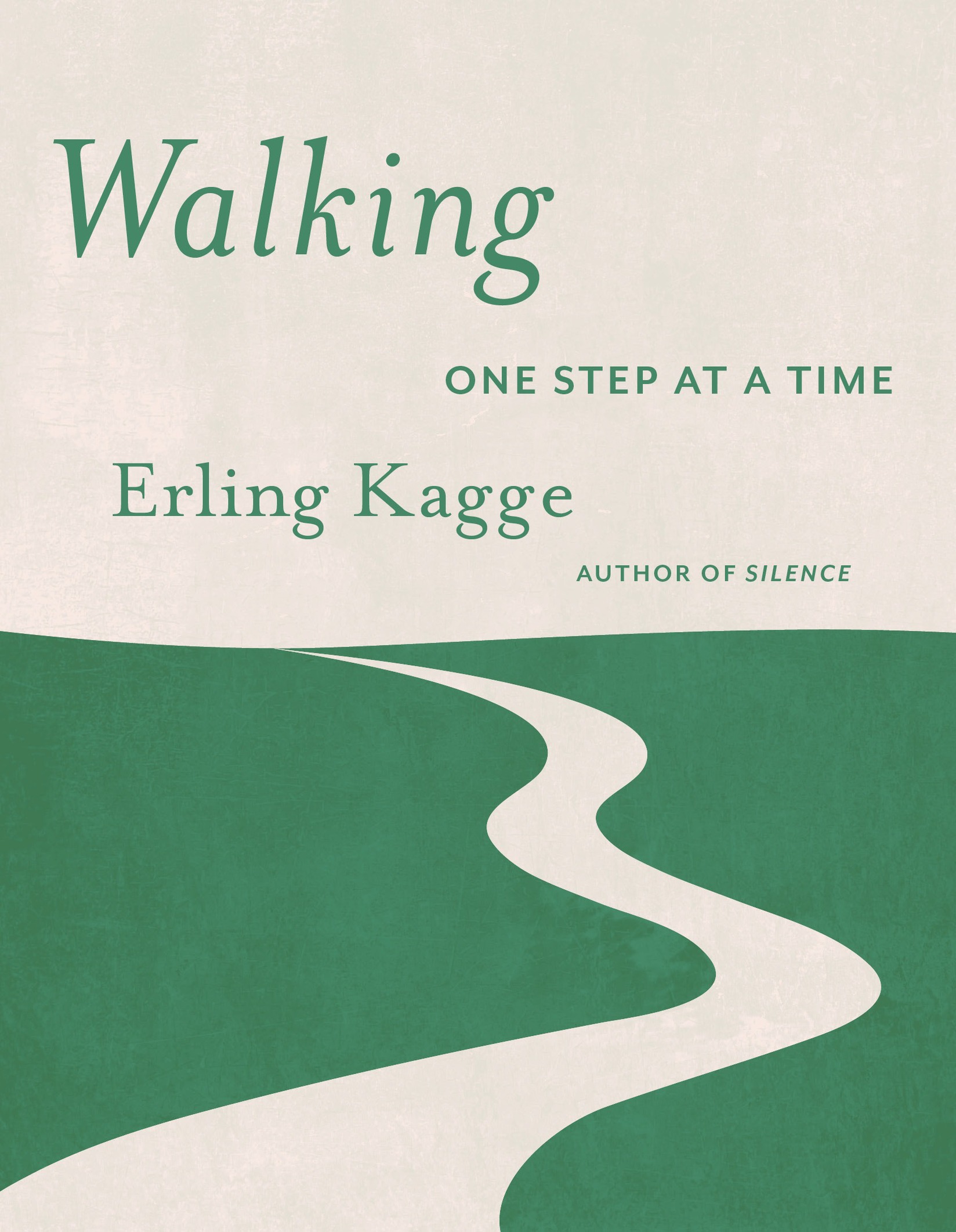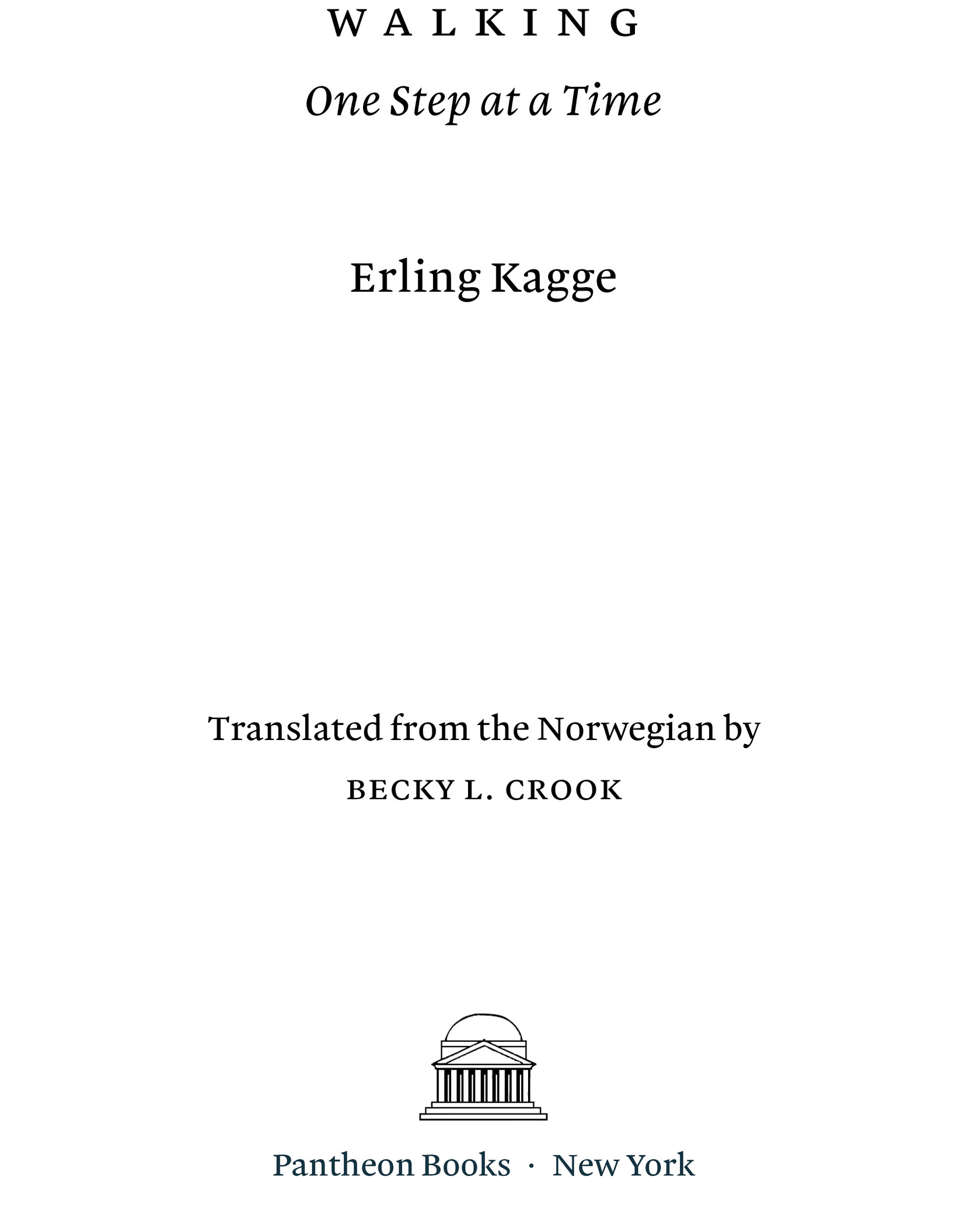Contents
Landmarks
Print Page List
Translation copyright 2019 by Becky L. Crook
All rights reserved. Published in the United States by Pantheon Books, a division of Penguin Random House LLC, New York, and distributed in Canada by Random House of Canada, a division of Penguin Random House Canada Limited, Toronto. Originally published in Norway as g: Ett skritt av gangen by Kagge Forlag AS, Oslo, in 2018. Copyright 2018 by Erling Kagge. This translation originally published in hardcover in Great Britain by Viking, an imprint of Penguin Books Ltd., a division of Penguin Random House Ltd., London, in 2019.
Pantheon Books and colophon are registered trademarks of Penguin Random House LLC.
Grateful acknowledgment is made to the following for permission to reprint previously published material: Lyrics from Walking and Falling by Laurie Anderson, copyright 1982 by Laurie Anderson and Nonesuch Records. Reprinted by permission of Laurie Anderson.
Excerpt from To the Foot from Its Child by Pablo Neruda, translated by Jodey Bateman, originally published in Argentina as Al pie desde su nio in Estravagario by Editorial Losada, Buenos Aires, in 1958. Copyright 1958 by Pablo Neruda.
Library of Congress Cataloging-in-Publication Data
Name: Kagge, Erling, author.
Title: Walking : one step at a time / Erling Kagge ; translated by Becky L. Crook.
Other titles: g. English
Description: New York : Pantheon Books, 2019. Originally published in Norway as g: Ett skritt av gangen by Kagge Forlag AS, Oslo, in 2018.
Identifiers: LCCN 2018035901. ISBN 9781524747848 (hardcover). ISBN 9781524747855 (ebook)
Subjects: LCSH: Kagge, Erling. Walking. ExplorersNorwayBiography. Meditations.
Classification: LCC GV199.5 .K34 2019 | DDC 796.51dc23 | LC record available at lccn.loc.gov/2018035901
Ebook ISBN9781524747855
www.pantheonbooks.com
Cover design by Jenny Carrow
v5.4
ep
Contents
For my mother and father who took me walking, and for Ingrid, Solveig and Nor
Youre walking. And you dont always realize it
But youre always falling
With each step, you fall forward slightly
And then catch yourself from falling
Laurie Anderson, Walking and Falling
I
One day, my grandmother was no longer able to walk.
That was the day she died. Physically, she continued to live a little longer, but her new knees, which had surgically replaced the old ones, were worn out and no longer able to carry her body. The remaining strength in her muscles wasted away from the days spent lying in bed. Her digestive system began to fail. Her heartbeat slowed down and her pulse became uneven. Her lungs took in less and less oxygen. Towards the end, she was left gasping for air.
In those days I had two daughters at home. The youngest, Solveig, was thirteen months old. As her great-grandmother slowly shrank into a fetal position, Solveig felt it was high time she learned how to walk. Arms raised above her head and hands clasped around my fingers, she managed to totter across the living-room floor. Each time she let go and attempted a few steps on her own, she would discover the difference between whats up and whats down, whats high and whats low. When she stumbled and smacked her forehead on the edge of the living-room table, she learned that some things are hard and others soft. Learning to walk may be the most perilous undertaking of our lives.
Arms outstretched to keep her balance, Solveig soon mastered the feat of walking across the living-room floor. Spurred by her fear of falling, she took short, staccato-like steps. Observing her first attempts, I was surprised at the way she spread her toes, as though trying to grab on to the floor. A childs foot doesnt know its a foot yet, it wants to be a butterfly or an apple, writes the Chilean poet Pablo Neruda at the start of his poem To the Foot from Its Child.
All of a sudden, Solveig was moving with more confident steps. Through the open terrace door and out into the garden. Her naked feet now came into contact with something more than flooring: the Earths surfacegrass, stone and, soon, tarmac.
It was as though a small part of her personalityher temperament, curiosity and willbecame more apparent when she walked. When I observe a child learning to walk, it feels as if the joy of exploration and mastery is the most powerful thing in the world. Placing one foot in front of the other, investigating and overcoming are intrinsic to our nature. Journeys of discovery are not something you start doing, but something you gradually stop doing.
When my grandmotherI called her my mormorwas born in Lillehammer, ninety-three years before Solveig, her family still relied on their feet as the primary mode of transport from one location to another. Mormor could take the train if she wanted to travel very long distances, but she didnt have many reasons to leave Lillehammer. Instead, the world came to her. Throughout her youth she bore witness to the arrival of mass-produced cars, bicycles and aeroplanes in her region of Oppland. Mormor told me that my great-grandfather asked her to accompany him down to Mjsa, the biggest lake in Norway, to watch an aeroplane together. She told the story with such rapture that it felt as if it had taken place the day before. The skies weresuddenlyno longer solely the realm of birds and angels.
*
Homo sapiens have always walked. Since the time they first made their way from East Africa over 70,000 years ago, our species history has been defined by bipedalism. Walking on two legs laid the foundation for everything we have become today. Our kind crossed over Arabia, continued on foot up towards the Himalayas, spread eastward throughout Asia, across the frozen Bering Strait through the Americas, or south towards Australia. Others walked west to Europe and, finally, all the way up to Norway. These first peoples were able to travel long distances on foot, to hunt in new ways over larger areas, and to gain new experiences, and learned from them. Their brains developed more rapidly than those of any other living creatures. First we learned to walk, then we learned to make fire and to prepare food, and then we developed language.
Human languages reflect the idea that life is one single, long walk. In Sanskrit, one of the worlds oldest languages, originating from India, the past tense is designated as the word gata, that which we have walked, and the future is angata, that which we have not yet walked. This word gata is related linguistically to the Norwegian word gtt, meaning walked. In Sanskrit, the present is indicated by something as natural as that which is directly in front of us, pratyutpanna.
*
I have no idea how many walks Ive been on.
Ive been on short walks; Ive been on long walks. Ive walked from villages and to cities. Ive walked through the day and through the night, from lovers and to friends. I have walked in deep forests and over big mountains, across snow-covered plains and through urban jungles. I have walked bored and euphoric and I have tried to walk away from problems. I have walked in pain and in happiness. But no matter where and why, I have walked and walked. I have walked to the ends of the worldliterally.

